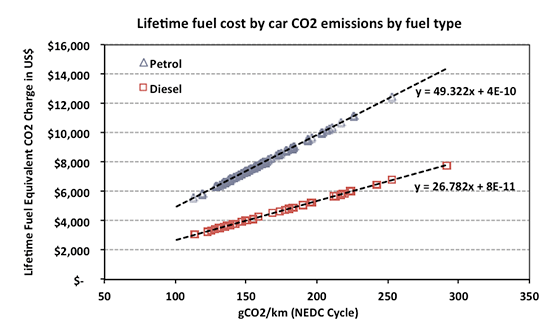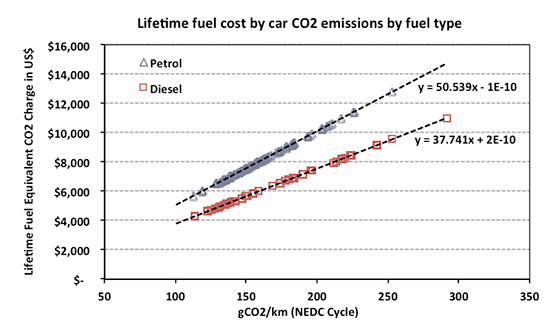Blog
India’s diesel fuel price hike: Better for fuel under-recoveries, inadequate to stem passenger car dieselization
Last spring, my colleague Hui He blogged about then-new vehicle taxes in India. She argued that the increase in excise taxes on bigger passenger cars was a welcome step toward disincentivizing the purchase of high emitting gas-guzzlers, but the new taxes did nothing to disincentivize the purchase of diesel cars (see the chart below). For example, even with the new taxes in 2012, if given the choice between two vehicles that both emit 150 gCO2/km, a car owner stands to save US$3,380 (Rs. 1,70,000) over ten years by choosing the diesel model over the petrol model, assuming 10,000 km driven per year.

The present batch of diesel cars in India is problematic for a number of reasons. Even Euro IV diesel cars are allowed to emit much more NOx and PM than comparable petrol cars, which exacerbates India’s air quality problems and leads to premature morbidity and mortality. And for years diesel cars have enabled car owners—who are relatively wealthy—to take advantage of government subsidies for diesel fuel that are supposed to help farmers, goods carriers, and public transport.
This last point is set to change. The government has now instituted a policy to increase diesel prices by 40–50 paise (about one US cent) per month at retail outlets until the entire diesel under-recovery of roughly Rs. 10 (US$0.20) is eliminated. It may take about two years for this to happen, but at least the ball is in motion.
Nevertheless, this doesn’t negate the need for an additional excise tax on diesel cars. As Anumita Roychowdhury of the Center for Science and Environment (CSE) points out, bulk buyers of diesel (railways, public transport undertakings, the power sector, etc.) have had to deal with an immediate Rs. 10 per liter hike in diesel prices, while diesel car owners will continue to take advantage of diesel subsidies for some time to come.
Even after diesel subsidies are eliminated, a difference of about Rs. 10 per liter will remain between diesel and petrol prices due to differences in fuel sales taxes. The chart below shows the narrowing, but not disappearing, gap between petrol and diesel. This means that the ten-year fuel cost savings of US$3,380 (Rs. 1,70,000) for diesel car owners will decrease to US$1,920 (Rs. 96,000), but the incentive to purchase diesel cars will continue.

An excise tax on diesel cars can help offset the environmental and health costs of diesel car emissions. Additionally, if channeled correctly, the funds raised from this excise tax could be invested, for example, in public sector refineries to enable them to supply 50-ppm sulfur petrol and diesel nationwide by 2015, instead of limiting such cleaner fuels to a handful of cities. This would be a key first step toward enabling more stringent vehicle emission standards to close the emissions gap between diesel and petrol vehicles by the end of this decade. Once that is in place, perhaps an excise tax on diesel cars can be reconsidered.
